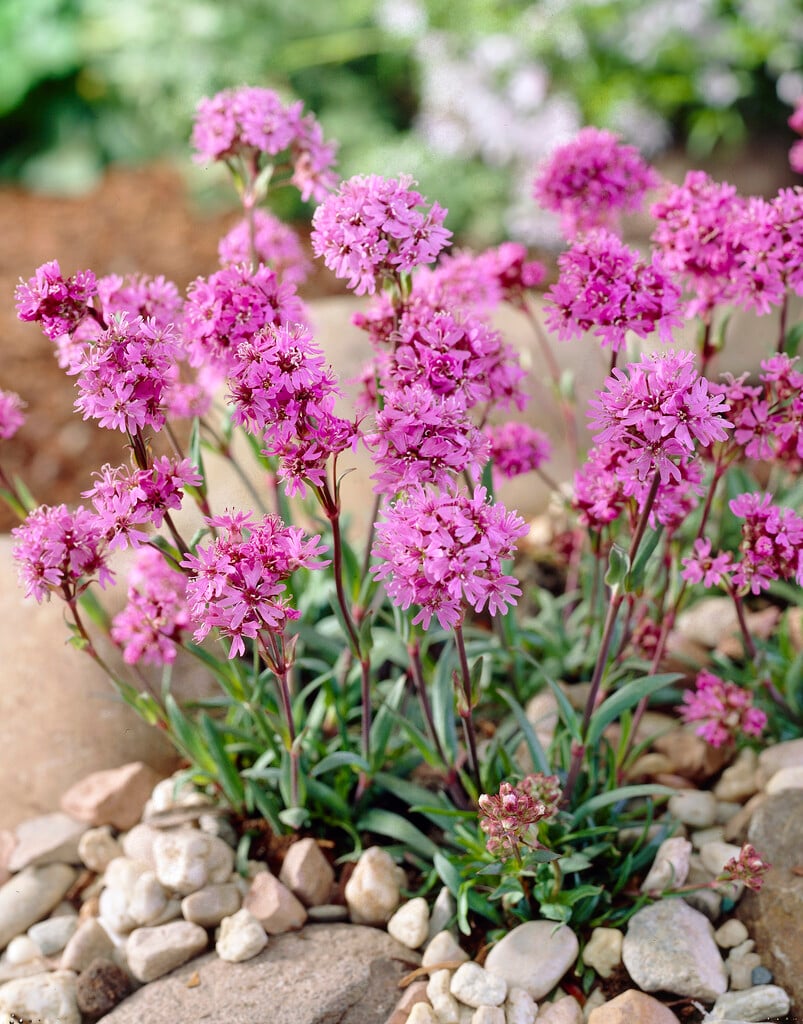Lychnis alpina
alpine catchfly
A dwarf, tufted perennial to 15cm high with oblong to lance-shaped dark green leaves and dense, rounded, terminal clusters of purple-pink flowers in late spring to early summer
Other common names
alpine catchflyrock lychnis
Synonyms
Lychnis alpina 'Serpenticola'Lychnis alpina var. serpentinicola
see moreLychnis alpina subsp. americana
Lychnis alpina
Silene suecica
Viscaria alpina subsp. americana
Size
Ultimate height
0.1–0.5 metresTime to ultimate height
2–5 yearsUltimate spread
0.1–0.5 metresGrowing conditions
Moisture
Well–drainedpH
Acid, Alkaline, NeutralColour & scent
| Stem | Flower | Foliage | Fruit | |
| Spring | Pink | Green | ||
|---|---|---|---|---|
| Summer | Pink | Green | ||
| Autumn | Green | |||
| Winter |
Position
- Full sun
- Partial shade
Aspect
East–facing or North–facing or South–facing or West–facing
Exposure
Exposed or Sheltered Hardiness
H7Botanical details
- Family
- Caryophyllaceae
- Native to GB / Ireland
- Yes
- Foliage
- Deciduous
- Habit
- Tufted
- Genus
A genus of low-growing flowering plants with thin, ovate green foliage and clusters of pretty pink, white or purple flowers on sticky, upright stems. A deep taproot makes this a genus which can survive drought conditions
- Name status
Correct
- Plant range
- E Canada, N & C Europe
How to grow
Cultivation
Well suited for rock gardens and troughs. Plant in moderately fertile, well drain soil in full sun or light shade. May be short-lived, but will often self-seed
Propagation
Propagate by seed. Sow as soon as ripe or in winter-spring. Seeds benefit from exposure to cold to break their dormancy
Suggested planting locations and garden types
- Cottage and informal garden
- Gravel garden
- Rock garden
Pruning
Deadhead to promote further flowering. Cut back in the autumn
Pests
Generally pest-free
Diseases
Generally disease-free
Get involved
The Royal Horticultural Society is the UK’s leading gardening charity. We aim to enrich everyone’s life through plants, and make the UK a greener and more beautiful place.
